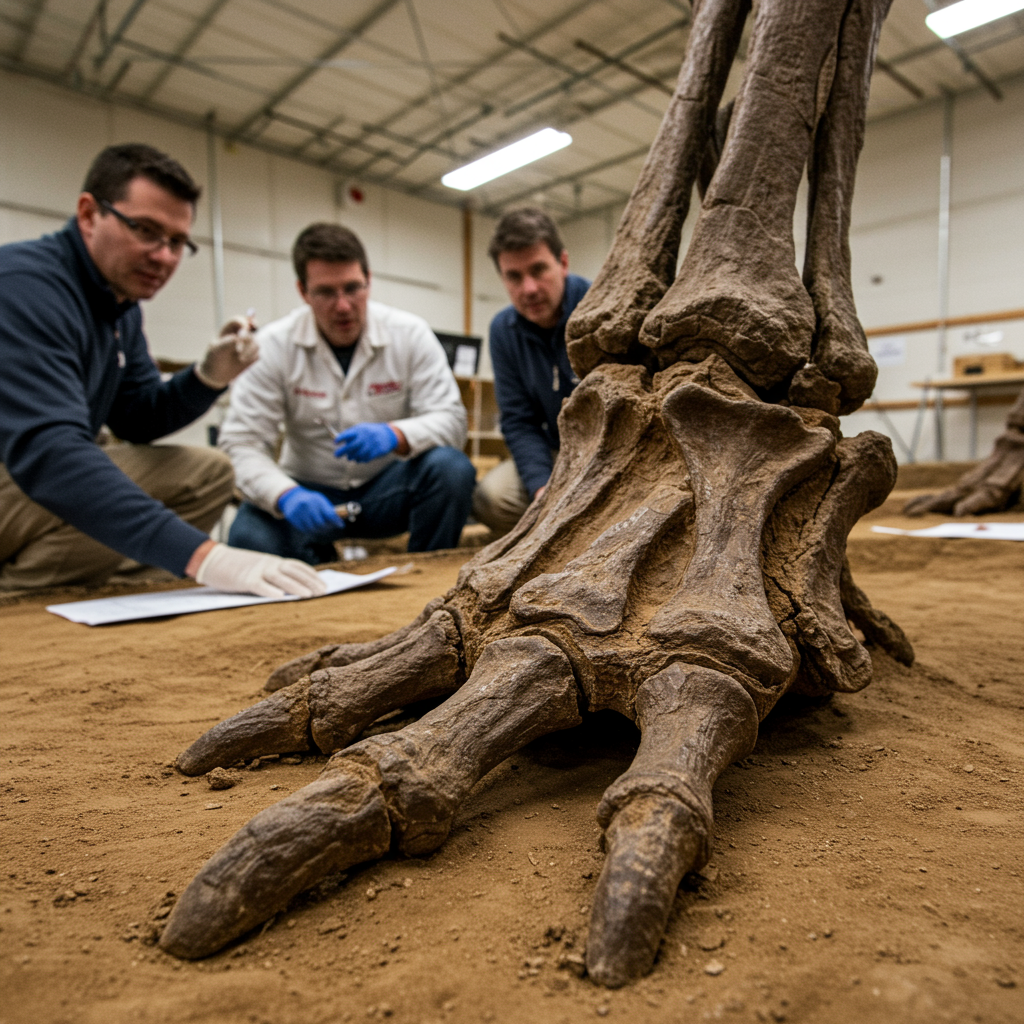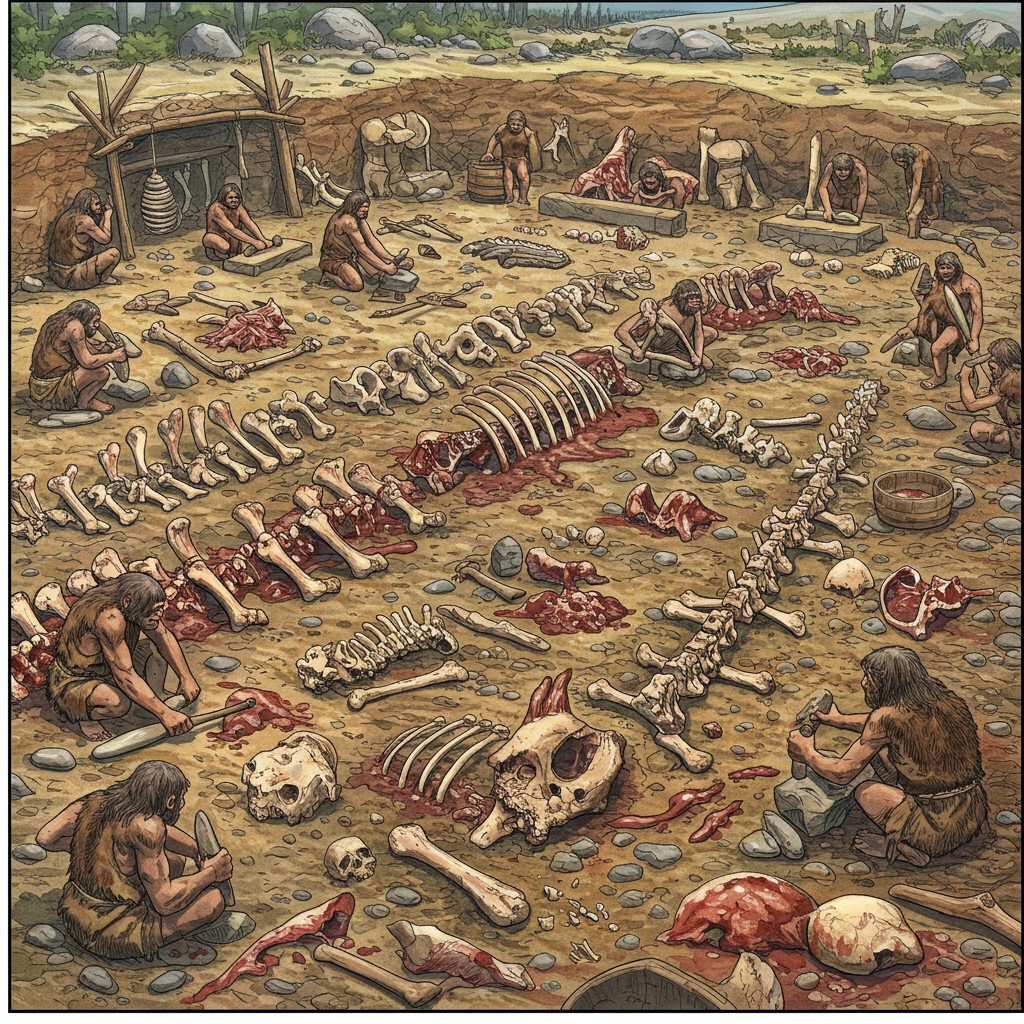The ancient world of dinosaurs just revealed an astonishing secret. Scientists in Wyoming have unearthed two incredibly preserved Edmontosaurus specimens. These remarkable fossils, often called “mummies,” offer an unprecedented look at how these massive creatures truly appeared. Far from mere skeletons, these finds include detailed skin contours and, surprisingly, well-defined hoof-like structures on their feet. This groundbreaking discovery challenges long-held beliefs about dinosaur preservation and provides invaluable insights into the lives of these majestic herbivores.
The Wyoming Revelation: Unearthing “Clay Mask” Mummies
Around 66 million years ago, during the late Cretaceous period, a pair of Edmontosaurus annectens met their end in what is now Wyoming. One was a large adult, estimated at 40 feet long, and the other a two-year-old juvenile. Their unfortunate demise, perhaps in a flash flood, led to an extraordinary form of preservation. Hardened clay enveloped their bodies, creating a precise mold of their soft tissues and skin. This process, dubbed a “clay mask” by researchers, is unique. It allowed their outer forms to be cast in exquisite detail, earning them the “mummy” designation.
Paul Sereno, the University of Chicago paleontologist leading the study, emphasized the significance. “We’re seeing the full profile of the dinosaur for the first time,” he noted. This isn’t about preserved DNA or internal tissues; it’s a meticulously formed cast. The “clay mask” preservation allowed scientists to understand their external anatomy with a clarity previously thought impossible for land-dwelling animals.
Unprecedented Detail: Beyond the Skeleton
These Wyoming Edmontosaurus mummies provide more than just skin impressions. They reveal a suite of previously unseen features that paint a much richer picture of the animal. Beyond the hoof-like structures on their hind toes, paleontologists confirmed a “dragon-like” appearance. This includes a distinct row of overlapping, spiky scales running down their backs, connected directly to their spines.
Previous research had hinted at other soft tissue details in Edmontosaurus annectens. These include a fleshy comb on their heads and front toes wrapped in a mitt of flesh, also with a hoof-like covering. Their mouths featured rough, shovel-like beaks, perfectly adapted for grazing. These discoveries combine to offer the most complete, fleshed-out view of a large dinosaur found to date. This level of detail transforms our understanding of their appearance and ecology.
A Deeper Look at Dinosaur Skin
Dinosaur mummies, like these Edmontosaurus finds, are not chemically embalmed. Instead, they are fossils that preserve detailed skin impressions and sometimes other soft tissues as thin layers within rock. For years, scientists believed such exceptional preservation required rapid burial in sediment. However, newer findings suggest diverse pathways. The famous “Dakota” Edmontosaurus mummy, for instance, likely lay exposed for weeks or months after death. During this time, decay and scavenging created openings, allowing the tougher skin to dry out and persist before eventual burial. The Wyoming “clay mask” presents yet another preservation method. Here, a delicate, almost imperceptible clay layer adhered to the decaying body, capturing its precise form. This fragile layer can be easily overlooked during excavation.
Hadrosaurs, or duck-billed dinosaurs, are disproportionately represented among known dinosaur mummies. This isn’t necessarily due to unique biological traits. Paleontologists suggest it’s largely a “numbers game.” Hadrosaurs were among the most numerous dinosaurs, increasing their chances of exceptional preservation. Their large size also made them more likely to be preserved at least partially articulated.
What Dinosaur Mummies Teach Us
Dinosaur mummies offer a wealth of information far beyond a creature’s outward appearance. They are invaluable tools for understanding various aspects of ancient life.
Unlocking Locomotion and Movement
The hoof-like structures on Edmontosaurus annectens, combined with fossilized footprints, help scientists hypothesize about their movement. Researchers now suggest these dinosaurs possessed a flexible gait. They were capable of moving efficiently, likely able to “run on two legs and walk on four,” depending on the situation. This dynamic understanding of their locomotion challenges static previous interpretations.
Differentiating Species Through Skin Patterns
Even subtle differences in skin impressions can provide crucial clues for species differentiation. Comparing scale patterns, such as those found on the duck-billed dinosaurs Saurolophus angustirostris from Mongolia and Saurolophus osborni from Canada, has been enlightening. These distinct patterns helped resolve debates over whether these skeletally similar dinosaurs were indeed separate species. This suggests that unique scale patterns may have aided intraspecies identification among dinosaurs.
Revealing Ancient Camouflage Strategies
Fossilized skin can also offer insights into dinosaur coloration and camouflage. Studies on the small horned dinosaur Psittacosaurus (2016) and the armored dinosaur Borealopelta (2017) revealed countershading. This meant they had darker scales on their upper bodies and lighter scales below. Such coloration suggests a camouflage strategy, helping them blend into their forest environments to evade predators like tyrannosaurs.
An Ancient Ecosystem: Edmontosaurs and Their Predators
Edmontosaurus were incredibly common herbivores during the late Cretaceous. They lived in herds, similar to modern-day bison, providing some safety in numbers. Despite their size and herd mentality, they were a favored meal for the formidable Tyrannosaurus rex. “It’s not an animal that would be easy to take down,” Sereno explained. This fact further highlights the sheer power and predatory prowess required by a T. rex to successfully hunt such large and robust prey. The relationship between Edmontosaurus and T. rex was a foundational part of their shared ecosystem.
Hunting for the Future: The “Mummy Zone” and Unsolved Mysteries
The discovery of these Wyoming Edmontosaurus specimens fuels ongoing research into fossilization. Sereno proposes the existence of a specific “mummy zone” in Wyoming. He believes that particular geological conditions in this region might favor the formation of these rare “clay mask” mummies. The future of fossil research also focuses on understanding the diverse pathways organisms take to become fossils. Scientists are actively investigating decomposition processes and the complex chemical changes involved in fossilization. A key remaining mystery is the chemical process by which skin, which lacks the natural mineral framework of bone, ultimately fossilizes. Solving this puzzle could dramatically improve paleontologists’ ability to identify and preserve soft tissue fossils in the future, unlocking even more secrets about ancient life.
Frequently Asked Questions
What is a “mummified dinosaur” and how does it form?
A “mummified dinosaur” refers to a fossil that preserves detailed skin impressions and sometimes other soft tissues, not through chemical embalming, but through natural fossilization processes. These can form in several ways: rapid burial in sediment, drying out on the surface before burial (like the “Dakota” Edmontosaurus), or a novel “clay mask” method where a thin layer of clay adheres to the decaying body, creating a precise cast of its external form.
What new information have the Wyoming Edmontosaurus mummies revealed?
These recent Edmontosaurus mummies from Wyoming have provided unprecedented detail about their appearance. Beyond confirming hoof-like structures on their hind feet, they revealed a previously unseen row of overlapping, spiky scales running down their backs, giving them a “dragon-like” look. These discoveries, combined with earlier findings, complete the picture of Edmontosaurus with a fleshy head comb, mitt-like front feet, and shovel-like beaks.
How do dinosaur mummies help scientists understand ancient ecosystems and behavior?
Dinosaur mummies offer unique insights beyond skeletal remains. They help scientists understand locomotion by revealing foot structures, suggesting animals like Edmontosaurus had a flexible gait. Skin patterns can aid in species differentiation. Furthermore, evidence of countershading in some mummies indicates camouflage strategies, providing clues about predator-prey dynamics and how dinosaurs interacted with their environments.
Conclusion: A Glimpse into the Past
The discovery of these Edmontosaurus mummies with their astonishingly preserved skin and hoof-like features is a monumental achievement in paleontology. It not only provides the most complete view of a large dinosaur to date but also expands our understanding of fossilization processes. From uncovering unexpected “dragon-like” scales to re-evaluating dinosaur locomotion and camouflage, these ancient “clay masks” are bringing the Cretaceous period to vivid life. As researchers continue to explore “mummy zones” and unravel the chemical mysteries of soft tissue preservation, the past promises to reveal even more of its profound secrets.




